Stress and anxiety are widespread in our industry and you may have already noticed that it’s really hard to coach someone who is highly stressed or anxious. It’s also really hard for you to personally perform at your best when you’re in that state.
In this workshop, you’ll learn (and practice) a collection of specific techniques to immediately release those feelings of stress or anxiety. Techniques include bi-lateral stimulation through movement to rebalance brain activity and several techniques that will lower anxiety by triggering the parasympathetic nervous system: From relaxing the jaw to switching your eyes into peripheral vision. In all cases, we’ll talk about some of the neuroscience and then practice the technique as a group.
Recording of this session from July 2019
Update (Jan 2024): In this video, I talk about fight, flight, and freeze as all being the same response but this is incorrect. As my understanding of Polyvagal Theory has evolved, I’ve come to realize that freeze is something completely different. If you consider what I say here to only apply to fight or flight then it’s still relevant and useful.
The video above was recorded at the Toronto Agile Lunch in June 2019. Thanks to the organizers of that event for recording the session and publishing it on YouTube.
My initial training on anti-anxiety techniques was through Melissa Tiers, an amazing hypnotist who is internationally known for her work on anxiety and addiction. I highly recommend her book “Anti-Anxiety Toolkit: Rapid techniques to rewire the brain”.
Autonomic Nervous System
The Autonomic nervous system is made up of the Sympathetic Nervous System which is designed to prepare us for fight/flight/freeze and the Parasympathetic Nervous System which is designed to take us out of that state and back into the more normal rest/digest state.
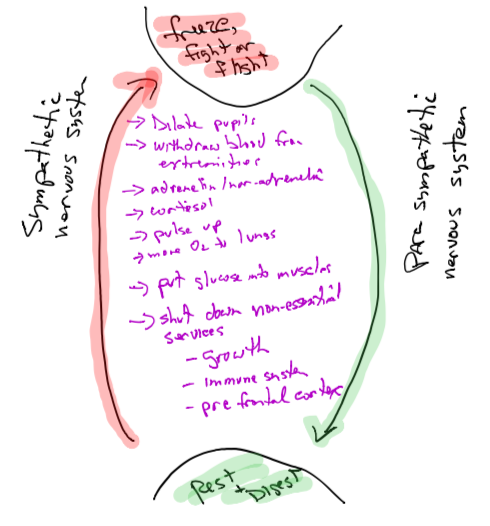
The sympathetic/parasympathetic systems aren’t boolean with one or the other one at any time. Each can be partially activated at any time to provide a sliding scale of effects.
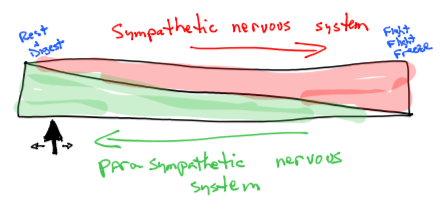
Bilateral Stimulation
Pick up an object (preferably something that doesn’t spill or won’t break if you drop it). Pass it slowly from one hand to the other. This will rebalance brain activity across the two hemispheres, reducing the likelihood of the sympathetic nervous system being triggered.
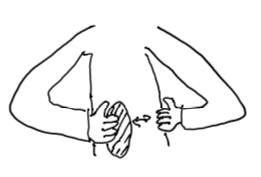
Raise Tongue / Relax Jaw
These two techniques work in different ways although they achieve the same result. Triggering the parasympathetic nervous system and causing relaxation. I tend to put them together because the moment I raise my tongue, I relax my jaw automatically.

Peripheral vision
Pick a spot on the wall, preferably something not moving. Now without moving your eyes, expand your awareness outwards. To the left and the right. To the top and the bottom. As you do this, you will begin to relax.
Bonus: If you have that internal voice, telling you that you aren’t good enough or that you can’t do something then that voice will shut up while you are in peripheral vision.
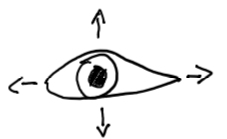
In this video, Dr Andrew Huberman walks through this concept in more depth.
Heart Breathing
As you breathe in and out, imagine that you’re breathing in through your heart and back out through your heart. Visualize this clearly and breathe slowly and through the process of brainwave entrainment, you will begin to relax.

Longer exhales than inhales
As you breathe in and out, take longer on the exhale than on the inhale. 7-11 is a fairly common pattern. Inhale for a count of 7 and exhale for a count of 11.
Inhalation stimulates the sympathetic nervous system and exhalation stimulates the parasympathetic. By deliberately making the exhale longer, you are causing the parasympathetic to be active more and that will calm you.
“Slow and deliberate exhalations effectively activate the vagal brake, slowing down our heart and bringing our entire body into the Green state“
— Our Polyvagal World: How Safety and Trauma Change Us
Regularly walk in nature
Numerous studies show the benefits of walking in nature.
The data revealed that just a twenty-minute nature experience was enough to significantly reduce cortisol levels. But if you spent a little more time immersed in a nature experience, 20 to 30 minutes sitting or walking, cortisol levels dropped at their greatest rate.
Neuroscience News
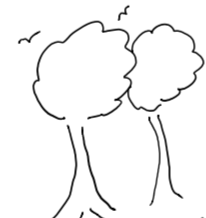
Laughter
Laughter causes a flood of positive neurotransmitters (dopamine, oxytocin, seratonin, endorphines) in your brain and will reduce your cortisol levels (also a neurotransmitter).
Interestingly, your brain can’t distinguish between real laughter and faked laughter. If you force laughter even when you aren’t noticing anything funny, your brain will still release all the good neurotransmitters and will assist with cortisol. Laugh often.
See also: “Laughter yoga” and “Laughnosis”
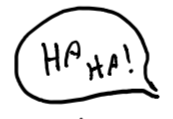
Power Pose : The “Wonder Woman” or “Superman” pose
Stand up straight with your hands on your hips for at least two minutes. Research by Dr Amy Cuddy shows that this will increase your testosterone and lower your cortisol.
Watch this TED talk by Dr Cuddy, where she talks about the research she did.
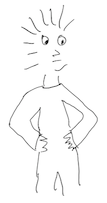
Note that while there was some early controversy about Dr Cuddy’s research, a subsequent 2020 meta-analysis of 73 different studies backed up her research and conclusions. “The effects on emotions and behaviours are robust”
Reframe
When you find yourself saying “I’m anxious”, say “I’m feeling unsafe” instead. The words we say to ourselves have incredible power and a wording change as simple as this can make a real difference.
See the logical levels model for an understanding of how this one works.
EFT (tapping)
There are a multitude of different tapping techniques, each with their own advantages. I use this simplified six point protocol that I learned from hypnosis trainer Mike Mandel. Tap on each of the following five points while stating out loud something about the problem. I typically say the nature of the problem on the first point and then some variation of “letting it go” on each of the others. The actual words aren’t important - what’s important is your focus on the thing you want to work on and the words will help you focus.
- Tap on the top of the head
- Tap on the forehead
- Tap on the side of one eye
- Tap under that eye
- Tap on the breast bone
- Grab the opposite wrist while taking a deep breath. Let the breath out while lowering that arm
Before and after tapping, check to see how strong that anxiety is on a scale of 0 to 10 where 10 is intense. Keep cycling through the tapping until that number gets to 0. Don’t stop just because “it’s better” or it will come back too soon.
If it isn’t working then you’re most likely dehydrated. Get a drink of water and try again.
If it still isn’t working then there may be electrical interference in that area. Move to another room and try again. While it’s rare to have this particular problem, it does happen every once and a while.
See also FasterEFT.com for Robert Smith’s work, that the above was based on.
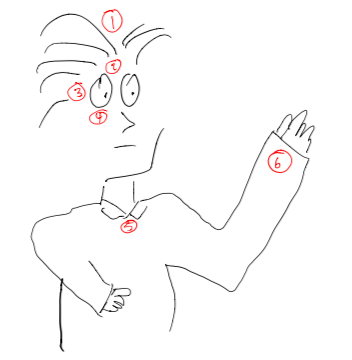
Other Interesting Things
These are things that I haven’t tested myself but that appear to get results. Try them and see.
Art therapy
Art therapy can lower cortisol levels.
This quasi-experimental study investigated the impact of visual art making on the cortisol levels of 39 healthy adults. … Results indicate that art making resulted in statistically significant lowering of cortisol levels.
Girija Kaimal, Kendra Ray & Juan Muniz (2016) Reduction of Cortisol Levels and Participants’ Responses Following Art Making, Art Therapy, 33:2, 74-80, DOI: 10.1080/07421656.2016.1166832
Gut breathing
My notes from a talk by Maura Barclay on the Science of Bias.
Gut breathing triggers the parasympathetic nervous system. We notice that many people bring their shoulders up and down as they breathe and this seems to weaken the effect. Gut breathing without moving the shoulders can help calm.
Frequently Asked Questions (FAQ)
- There are so many techniques. Which one should I use?
Try them all. You’ll find that some of them generally work better for you than others and some work better in specific situations than others. - I tried this one specific technique and am not getting results.
Try a different one. This is why we gave you more than one. - I’ve been doing one (or more) of the techniques for a bit and I’m finding that the anxiety just isn’t returning as often as it used to. Is this normal?
Yes, you are rewiring your brain a little bit every time you do these techniques and you should expect to need to do them less often over time. - I’ve been doing one (or more) of the techniques for a while and it makes me feel great at the time but then the problem comes back quickly every time.
If the problems are not getting less over time then they may be caused by an underlying issue such as past trauma. Seek out professional help. - Why don’t you talk about meditation or mindfulness practice?
Those are both excellent long term solutions to anxiety and we encourage you to try them. We don’t mention them because they take a long time to get benefits and we’re focused here on rapid solutions to immediate problems.
Recommended books
- The Anti-Anxiety Toolkit: Rapid techniques to rewire the brain (Melissa Tiers)
- Presence: Bringing your Boldest Self to your Biggest Challenges (Dr Amy Cuddy)
- Our Polyvagal World: How Safety and Trauma Change Us (Dr Steven Porges, Seth Porges)

